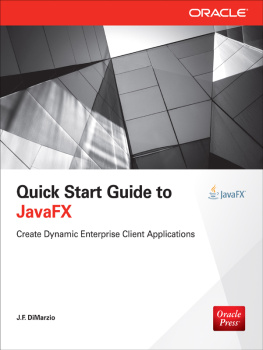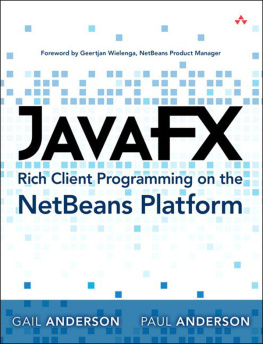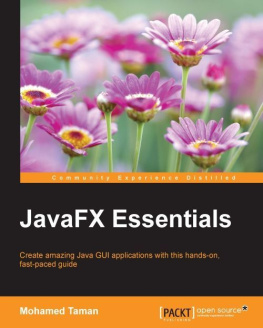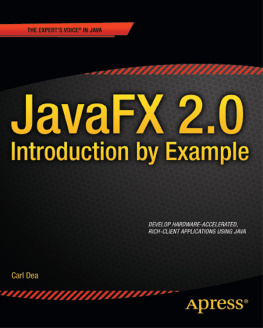Kishori Sharan - Learn JavaFX 17: Building User Experience and Interfaces with Java
Here you can read online Kishori Sharan - Learn JavaFX 17: Building User Experience and Interfaces with Java full text of the book (entire story) in english for free. Download pdf and epub, get meaning, cover and reviews about this ebook. year: 2022, publisher: Apress, genre: Computer. Description of the work, (preface) as well as reviews are available. Best literature library LitArk.com created for fans of good reading and offers a wide selection of genres:
Romance novel
Science fiction
Adventure
Detective
Science
History
Home and family
Prose
Art
Politics
Computer
Non-fiction
Religion
Business
Children
Humor
Choose a favorite category and find really read worthwhile books. Enjoy immersion in the world of imagination, feel the emotions of the characters or learn something new for yourself, make an fascinating discovery.
- Book:Learn JavaFX 17: Building User Experience and Interfaces with Java
- Author:
- Publisher:Apress
- Genre:
- Year:2022
- Rating:3 / 5
- Favourites:Add to favourites
- Your mark:
Learn JavaFX 17: Building User Experience and Interfaces with Java: summary, description and annotation
We offer to read an annotation, description, summary or preface (depends on what the author of the book "Learn JavaFX 17: Building User Experience and Interfaces with Java" wrote himself). If you haven't found the necessary information about the book — write in the comments, we will try to find it.
This unique in-depth tutorial shows you how to start developing rich-client desktop applications using your Java skills and provides comprehensive coverage of JavaFX 17s features. Each chapter starts with an introduction to the topic at hand, followed by a step-by-step discussion of the topic with small snippets of code. The book contains numerous figures aiding readers in visualizing the GUI that is built at every step in the discussion. This book has been revised to include JavaFX 17 and earlier releases since previous edition.
It starts with an introduction to JavaFX and its history. It lists the system requirements and the steps to start developing JavaFX applications. It shows you how to create a Hello World application in JavaFX, explaining every line of code in the process. Later in the book, authors Kishori Sharan and Peter Spth discuss advanced topics such as 2D and 3D graphics, charts, FXML, advanced controls, and printing. Some of the advanced controls such as TableView, and WebView are covered at length in separate chapters.
This book provides complete and comprehensive coverage of JavaFX 17 features; uses an incremental approach to teach JavaFX, assuming no prior GUI knowledge; includes code snippets, complete programs, and pictures; covers MVC patterns using JavaFX; and covers advanced topics such as FXML, effects, transformations, charts, images, canvas, audio and video, DnD, and more. So, after reading and using this book, youll come away with a comprehensive introduction to the JavaFX APIs.
What You Will Learn
- How to build JavaFX User Interfaces and Java clients
- What are properties, bindings, observable collections, stages, scenes; how to use these
- How to play with colors, styling nodes and event handling
- How to add user interactivity (mouse, keyboard, DnD)
- How to do tables, trees and tree tables
- How to do 2D shapes, text nodes, 3D shapes
- How to apply effects, transformations, animations, images
- How to draw; play audio and video
Who is this book for:
Developers new to the JavaFX platform. Some prior Java experience is recommended.Kishori Sharan: author's other books
Who wrote Learn JavaFX 17: Building User Experience and Interfaces with Java? Find out the surname, the name of the author of the book and a list of all author's works by series.















